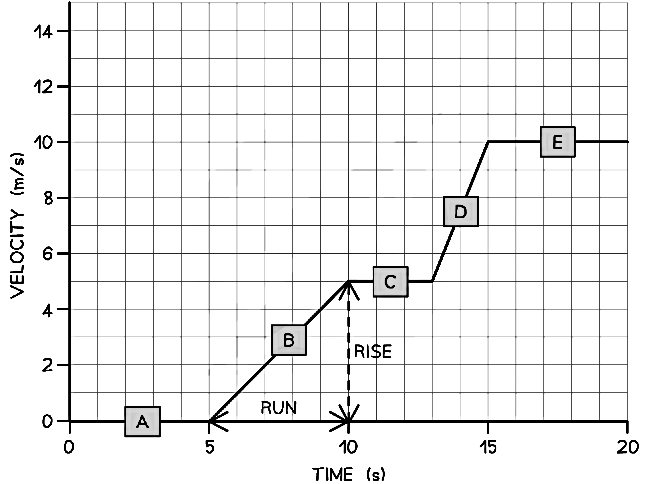Velocity-Time Graphs | Physics for Grade 10 PDF Download
| Table of contents |

|
| Gradient of a Velocity-Time Graph |

|
| Acceleration on a Velocity-Time Graph |

|
| Calculating the Gradient of a Velocity-Time Graph |

|
| Exam Tip |

|
| Solved Example |

|
Gradient of a Velocity-Time Graph
- A velocity-time graph shows how the velocity of a moving object varies with time
- The red line represents an object with increasing velocity
- The green line represents an object with decreasing velocity
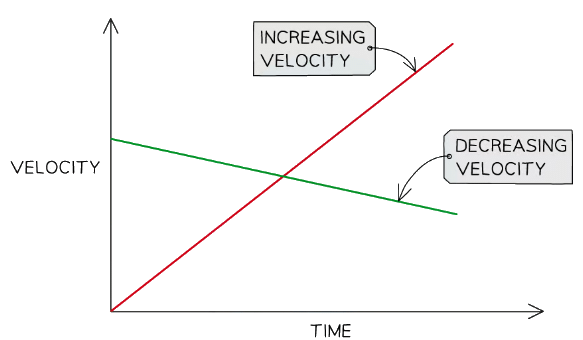 Increasing and decreasing velocity represented on a velocity-time graph
Increasing and decreasing velocity represented on a velocity-time graph
Acceleration on a Velocity-Time Graph
- Velocity-time graphs also show the following information:
- If the object is moving with a constant acceleration/deceleration
- The magnitude of the acceleration/deceleration
- A straight line represents constant acceleration
- The slope of the line represents the magnitude of acceleration
- A steep slope means large acceleration (or deceleration) - i.e. the object's speed changes very quickly
- A gentle slope means small acceleration (or deceleration) - i.e. the object's speed changes very gradually
- A flat line means the acceleration is zero - i.e. the object is moving with a constant velocity
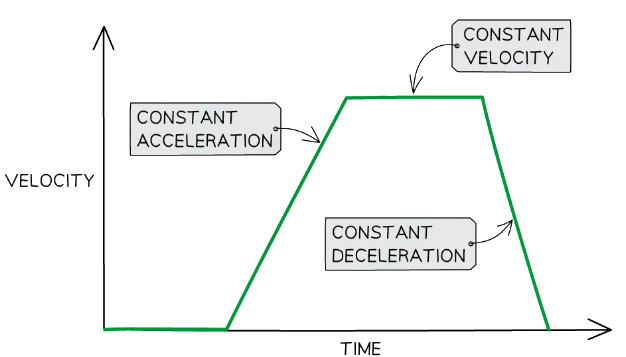 Interpreting the slope of a velocity-time graph
Interpreting the slope of a velocity-time graph
Calculating the Gradient of a Velocity-Time Graph
- The acceleration of an object can be calculated from the gradient of a velocity-time graph

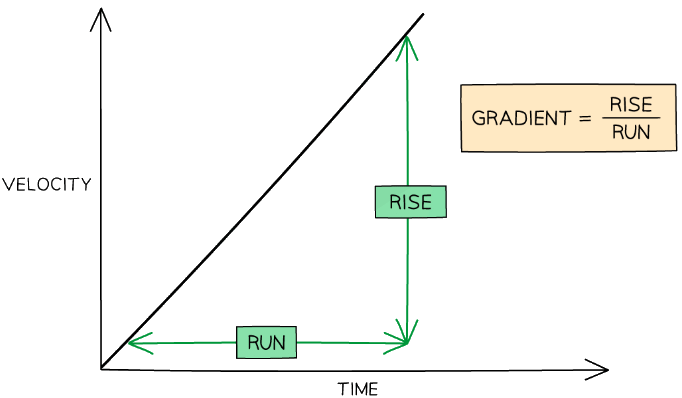 The gradient of a velocity-time graph
The gradient of a velocity-time graph
Exam Tip
Use the entire line, where possible, to calculate the gradient. Examiners tend to award credit if they see a large gradient triangle used - so remember to draw 'rise' and 'run' lines directly on the graph itself!
Solved Example
Example: Tora is training for a cycling tournament.
The velocity-time graph below shows her motion as she cycles along a flat, straight road.
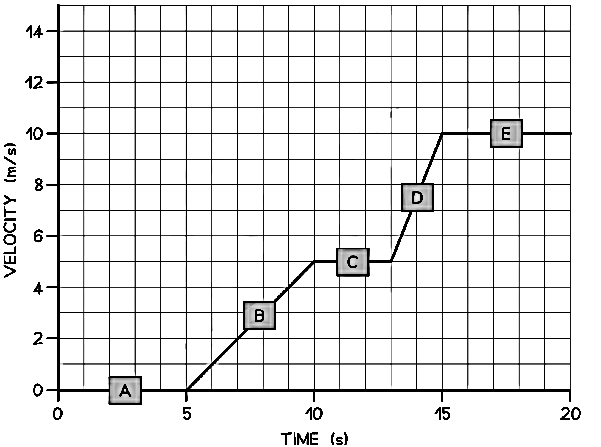 (a) In which section (A, B, C, D, or E) of the velocity-time graph is Tora’s acceleration the largest?
(a) In which section (A, B, C, D, or E) of the velocity-time graph is Tora’s acceleration the largest?(b) Calculate Tora’s acceleration between 5 and 10 seconds.
Part (a)
Step 1: Recall that the slope of a velocity-time graph represents the magnitude of acceleration
(i) The slope of a velocity-time graph indicates the magnitude of acceleration
(ii) Therefore, the only sections of the graph where Tora is accelerating is section B and section D
(iii) Sections A, C, and E are flat – in other words, Tora is moving at a constant velocity (i.e. not accelerating)Step 2: Identify the section with the steepest slope
(i) Section D of the graph has the steepest slope
Hence, the largest acceleration is shown in section DPart (b)
Step 1: Recall that the gradient of a velocity-time graph gives the acceleration
(i) Calculating the gradient of a slope on a velocity-time graph gives the acceleration for that time periodStep 2: Draw a large gradient triangle at the appropriate section of the graph
A gradient triangle is drawn for the time period between 5 and 10 seconds below:Step 3: Calculate the size of the gradient and state this as the acceleration
(i) The acceleration is given by the gradient, which can be calculated using:
acceleration = gradient = 5 ÷ 5 = 1 m/s2
(ii) Therefore, Tora accelerated at 1 m/s2 between 5 and 10 seconds
|
122 videos|150 docs|40 tests
|

